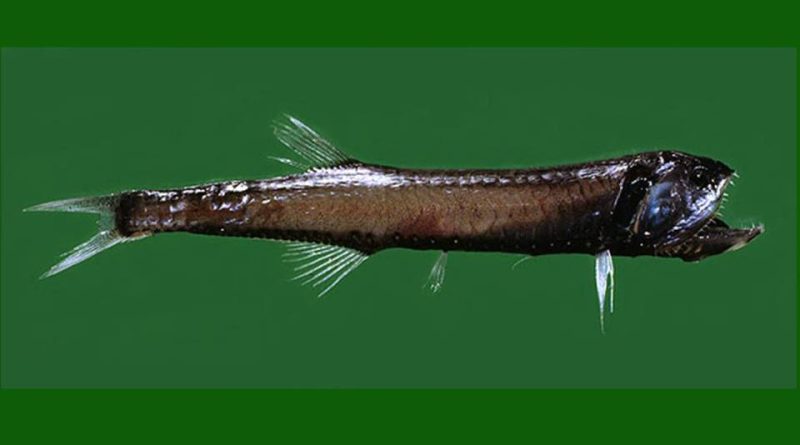Gonostoma denudatum
Gonostoma denudatum
The spinymouth or imperial anciova (Gonostoma denudatum Rafinesque, 1810) is a deep sea fish belonging to the Gonostomatidae family.
Systematics –
From a systematic point of view it belongs to:
Eukaryota domain,
Kingdom Animalia,
Phylum Chordata,
Class Actinopterygii,
Order Stomiiformes,
Gonostomatidae family,
Genus Gonostoma,
Species G. denudatum.
The term is basionym:
– Gonostoma denudata Rafinesque, 1810.
Geographic Distribution and Habitat –
Gonostoma denudatum is a fish present in some seas, such as in the eastern Atlantic: from Portugal to southern Angola including the Azores and the Mediterranean; it is also present off southern Africa.
In Italian seas, it is reported throughout the Tyrrhenian Sea, in the Strait of Messina, in the Ionian Sea and in the deepest area of the Adriatic.
Being an abyssal fish, its habitat is that of the marine depths up to at least 700 meters. It has pelagic habits.
It performs vertical daily migrations with the juveniles and adults moving between 400 and 700 m during the day and 100-200 m at night.
Description –
Gonostoma denudatum is a fish that can be recognized by the elongated shape of the body which occasionally reaches 20 cm but usually does not exceed 15 and is characterized by a silvery and black color on the belly. In fact, in live specimens the scales are black on the back and in the ventral area, with silvery reflections on the sides. Specimens recovered without scales are greyish, with almost transparent opercula.
The body narrows towards the tail, has a slight rise at the insertion of the dorsal and anal fins. It is very compressed laterally, it is covered by large deciduous scales, which are 32-36 on the lateral line.
There are large photophores located in the ventral and lateral parts; 5 light organs are located on the head.
The head is quite large and has relatively small eyes with inconspicuous nostrils.
The mouth, on the other hand, is large, with the maxilla extending to the sub-operculum. Sharp teeth are noted and arranged in a single row on the jaws, while they are absent on the vomer. It also has a double set of additional respiratory plates.
As regards the dorsal fin, this has 15 soft and triangular-shaped rays, which insert into the second half of the body, in correspondence with the anal. There is a second dorsal in the form of adipose papilla. The anal one has 29 rays, of which the first 2 detached, and is inserted in correspondence with the origin of the dorsal and is quite elongated; the rays decrease quite rapidly in height, especially near the caudal peduncle. The caudal, on the other hand, has short, upper and lower rays, spiniform and hooked. The pectorals are short and set very low. The ventral fins, even short, insert closer to the beginning of the anal fin than to the base of the pectoral fins.
Biology –
The Gonostoma denudatum is a fish of which little is known about its biology and its reproduction, both due to its abyssal habits and because, even if widespread in various seas, it is to be considered locally rare.
Ecological Role –
Gonostoma denudatum, as mentioned, is a bathypelagic species found below 700 meters of depth.
It is a predatory fish that captures fish and crustaceans and other forms of zooplankton.
It is occasionally caught with trawl nets, however its meat has an unappetizing taste.
In the Strait of Messina, like many other deep-sea fish, it is found stranded on the beaches, especially in the winter months.
According to the IUCN Red List, the species is classified as Least Concern (LC) due to its wide distribution and because there is no evidence of decline or specific threats.
Guido Bissanti
Sources
– Wikipedia, the free encyclopedia.
– GBIF, the Global Biodiversity Information Facility.
– Louisy P., 2016. Guide to the identification of marine fish of Europe and the Mediterranean. Il Castello Editore, Milan.
– Nikiforos G., 2008. Fauna of the Mediterranean. Giunti Editore, Florence.
Photo source:
– https://www.fishbase.se/photos/PicturesSummary.php?ID=1799&what=species
– https://upload.wikimedia.org/wikipedia/commons/1/1d/Gonostoma_denudatum.jpg


